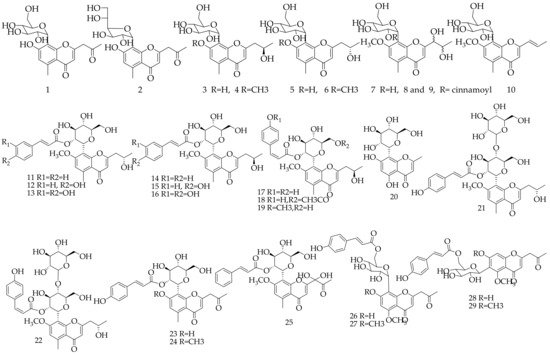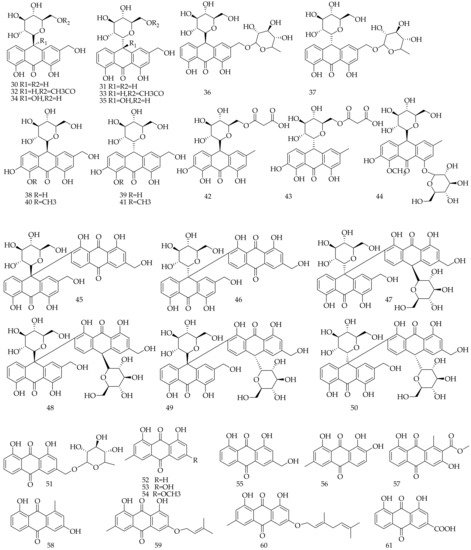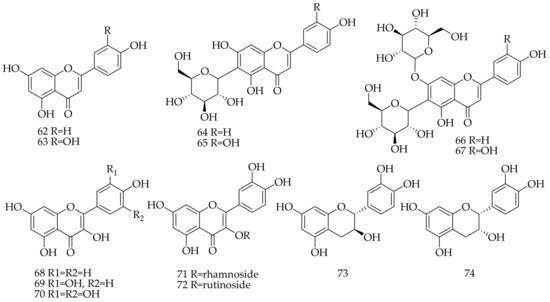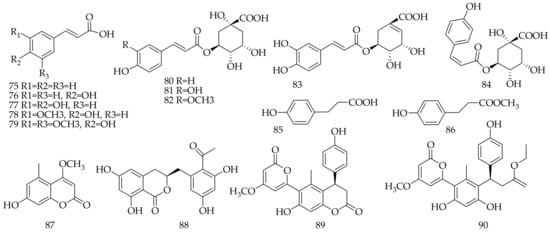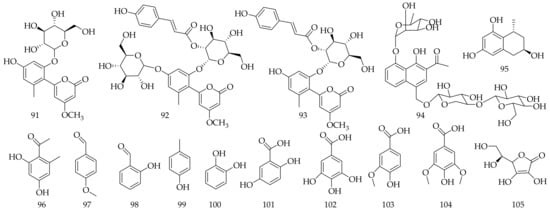Edible coating gels developed from the Aloe vera plant have been used as a traditional medicine for about 3000 years. Aloe vera contains approximately 110 potentially active constituents from six different classes: chromone and its glycoside derivatives; anthraquinone and its glycoside derivatives; flavonoids; phenylpropanoids and coumarins; phenylpyrone and phenol derivatives; and phytosterols and others. Apart from medicinal uses, Aloe gels have an important role in food preservation as edible coatings. They provide an edible barrier for atmospheric gases and moisture and help to reduce the respiration and transpiration of fresh produce, which helps to preserve its postharvest quality.
1. Introduction
Food quality mainly refers to three attributes: external (size, color, appearance, etc.), internal (taste, color, juicy, texture, seedless, etc.), and hidden (food safety and nutritional contents). External and internal quality attributes were of greatest importance to consumers for many years. However, since the occurrence of food-derived health problems has begun to increase, consumers have started to pay more attention to the hidden quality attributes of fresh produce and are asking for food to be free of chemical residues [
1]. Fungicides and other agrochemicals are of great importance in controlling postharvest diseases and have crucial role for the preservation of the postharvest quality, but misuse and/or excessive use of them might cause negative impacts on human health [
2,
3]. There is an increasing effort in postharvest studies to develop natural preservatives and antimicrobials to extend the storage duration of foods without chemical preservatives [
4,
5]. So far, many storage techniques and natural preservatives have been developed to extend the postharvest life of foods. The currently utilized natural preservatives are chitosan [
6,
7], essential oils [
8,
9], propolis extract [
10], plant extracts [
11,
12], edible coatings [
13,
14], and organic salts [
15]. Among these, edible coatings have been receiving more attention in recent years due to their potential for developing edible packaging materials [
16]. Weight loss, changes in textural quality, changes in chemical structure, and microbial pathogens (mostly fungus) are the most important postharvest problems for foods [
17,
18].
Aloe belongs to the family of Xanthorrhoeaceae, which consists of about 420 species, and has been used as a traditional medicine for about 3000 years [
19]. The perennial plant known as
Aloe vera is
Aloe barbadensis Miller, which is a well-known pharmaceutical herb that has long been used in traditional Chinese medicine for the treatment of various diseases. It is widely distributed in the semitropical regions and cultivated in many provinces of China.
2. Chemical Constituents of Aloe vera
The two-main class active constituent of the Aloe vera plant extract are chromone and anthraquinone and its glycoside derivatives, alongside others such as phenylpyrone derivatives, flavonoids, phenylpropanoids, coumarins, phytosterols, naphthalene analogs, lipids, and vitamins.
2.1. Chromone and its Glycoside Derivatives
Approximately 29 chromone derivatives were isolated and identified from Aloe vera (Table 1, Figure 1). Aloesin (1, formerly called aloeresin B), aloeresin A (23), isoaloeresin D (13) and aloeresin E (9) are the most significant active constituents of Aloe vera. Three aloediols (7, 8, and 9) were isolated and identified from Aloe vera, but the absolute configuration has not yet been determined.
Figure 1. Chemical structure of chromone and its glycoside derivatives from Aloe vera.
Table 1. Chromone and its glycoside derivatives isolated and identified from Aloe vera.
| No |
Constituents |
Molecular Formula |
Exact Mass |
References |
| 1 |
aloesin |
C19H22O9 |
394.1264 |
[22,23] |
| 2 |
neoaloesin A |
C19H22O9 |
394.1264 |
[24] |
| 3 |
8-C-glucosyl-(R)-aloesol |
C19H24O9 |
396.142 |
[22] |
| 4 |
8-C-glucosyl-7-methoxy-(R)-aloesol |
C20H26O9 |
410.1577 |
[22] |
| 5 |
8-C-glucosyl-(S)-aloesol |
C19H24O9 |
396.142 |
[25] |
| 6 |
8-C-glucosyl-7-methoxy-(S)-aloesol |
C20H26O9 |
410.1577 |
[25,26] |
| 7 |
8-C-glucosyl-7-O-methylaloediol |
C20H26O10 |
426.1526 |
[22,25] |
| 8 |
8-glucosyl-(2’-O-cinnamoyl)-7-O-methylaloediol A |
C29H32O12 |
572.1894 |
[27] |
| 9 |
8-glucosyl-(2’-O-cinnamoyl)-7-O-methylaloediol B |
C29H32O12 |
572.1894 |
[27] |
| 10 |
C-2′-decoumaroyl-aloeresin G |
C20H24O8 |
392.1471 |
[22] |
| 11 |
aloeresin E |
C29H32O10 |
540.1995 |
[26] |
| 12 |
isoaloeresin D |
C29H32O11 |
556.1945 |
[26,28,29] |
| 13 |
iso-rabaichromone |
C29H32O12 |
572.1894 |
[25] |
| 14 |
8-[C-β-D-[2-O-(E)-cinnamoyl] glucopyranosyl]-2-[(R)-2-hydroxypropyl]-7-methoxy-5-methylchromone |
C29H32O10 |
540.1995 |
[30] |
| 15 |
aloeresin D |
C29H32O11 |
556.1945 |
[22,30] |
| 16 |
rabaichromone |
C29H32O12 |
572.1894 |
[22] |
| 17 |
allo-aloeresin D |
C29H32O11 |
556.1945 |
[22] |
| 18 |
aloeresin K |
C31H34O12 |
598.205 |
[29] |
| 19 |
aloeresin J |
C30H34O11 |
570.2101 |
[29] |
| 20 |
8-C-glucosyl-noreugenin |
C16H18O9 |
354.0951 |
[27] |
| 21 |
4’-O-glucosyl-isoaloeresin DI |
C35H42O16 |
718.2473 |
[27] |
| 22 |
4’-O-glucosyl-isoaloeresin DII |
C35H42O16 |
718.2473 |
[27] |
| 23 |
aloeresin A |
C28H28O11 |
540.1632 |
[23] |
| 24 |
7-O-methyl-aloeresin A |
C29H30O11 |
554.1788 |
[23,31] |
| 25 |
9-dihydroxyl-2’-O-(Z)-cinnamoyl-7-methoxy-aloesin |
C29H30O12 |
570.1737 |
[31] |
| 26 |
6′-O-coumaroyl-aloesin |
C28H28O12 |
556.1581 |
[32] |
| 27 |
7-methoxy-6′-O-coumaroyl-aloesin |
C29H30O12 |
570.1737 |
[33] |
| 28 |
aloeveraside B |
C28H28O12 |
556.1581 |
[32,34] |
| 29 |
aloeveraside A |
C29H30O12 |
570.1737 |
[32,34] |
2.2. Anthraquinone and its Glycoside Derivatives
Approximately 32 anthraquinones and their glycoside derivatives were isolated and identified from Aloe vera (Table 2, Figure 2). The isomers of aloin A (30) and aloin B (31), two anthraquinone glucosides, are the most abundant active constituents of Aloe vera. However, chrysophanol (52), emodin (53), physcione (54), aloe-emodin (55) are four major anthraquinone aglycones. Six anthraquinone dimmers (45–50) were also identified from Aloe vera.
Figure 2. Chemical structure of anthraquinone and its glycoside derivatives from Aloe vera.
Table 2. Anthraquinone and its glycoside derivatives isolated and identified from Aloe vera.
| No |
Constituents |
Molecular Formula |
Exact Mass |
References |
| 30 |
aloin A |
C21H22O9 |
418.1264 |
[29] |
| 31 |
aloin B |
C21H22O9 |
418.1264 |
[29] |
| 32 |
6′-O-acetyl-aloin A |
C23H24O10 |
460.1369 |
[29] |
| 33 |
6′-O-acetyl-aloin B |
C23H24O10 |
460.1369 |
[29] |
| 34 |
10-hydroxyaloins A |
C21H22O10 |
434.1213 |
[28,32] |
| 35 |
10-hydroxyaloins B |
C21H22O10 |
434.1213 |
[28,32] |
| 36 |
aloinoside A |
C27H32O13 |
564.1843 |
[29] |
| 37 |
aloinoside B |
C27H32O13 |
564.1843 |
[29] |
| 38 |
7-hydroxyaloin A |
C21H22O10 |
434.1213 |
[23] |
| 39 |
7-hydroxyaloin B |
C21H22O10 |
434.1213 |
[23] |
| 40 |
7-hydroxy-8-O-methylaloin A |
C22H24O10 |
448.1369 |
[23,28] |
| 41 |
7-hydroxy-8-O-methylaloin B |
C22H24O10 |
448.1369 |
[23,28] |
| 42 |
6′-malonylnataloin A |
C24H24O12 |
504.1268 |
[23] |
| 43 |
6′-malonylnataloin B |
C24H24O12 |
504.1268 |
[23] |
| 44 |
homonataloside B |
C28H34O14 |
594.1949 |
[23] |
| 45 |
elgonica dimer A |
C36H30O14 |
686.1636 |
[29,35,36] |
| 46 |
elgonica dimer B |
C36H30O14 |
686.1636 |
[29,35,36] |
| 47 |
aloindimer A |
C42H42O18 |
834.2371 |
[29] |
| 48 |
aloindimer B |
C42H42O18 |
834.2371 |
[29] |
| 49 |
aloindimer C |
C42H42O18 |
834.2371 |
[29] |
| 50 |
aloindimer D |
C42H42O18 |
834.2371 |
[29] |
| 51 |
aloe-emodin-11-O-rhamnoside |
C21H20O9 |
416.1107 |
[32] |
| 52 |
chrysophanol |
C15H10O4 |
254.0579 |
[37] |
| 53 |
emodin |
C15H10O5 |
270.0528 |
[32,37] |
| 54 |
physcione |
C16H12O5 |
284.0685 |
[37] |
| 55 |
aloe-emodin |
C15H10O5 |
270.0528 |
[32,37] |
| 56 |
nataloeemodin |
C15H10O5 |
270.0528 |
[23] |
| 57 |
aloesaponarin I |
C17H12O6 |
312.0634 |
[38] |
| 58 |
aloesaponarin II |
C15H10O4 |
254.0579 |
[38] |
| 59 |
madagascine |
C20H18O5 |
338.1154 |
[39] |
| 60 |
3-Geranyloxyemodin |
C24H24O5 |
392.1624 |
[39] |
| 61 |
rhein |
C15H8O6 |
284.0321 |
[37] |
2.3. Flavonoids
Approximately 13 flavonoids and their glycoside derivatives were isolated and identified from Aloe vera (Table 3, Figure 3), including three types; namely flavone (62–67), flavonol (68–72), and flavan-3-ol (73,74).
Figure 3. Chemical structure of flavonoids from Aloe vera.
Table 3. Flavonoids isolated and identified from Aloe vera.
| No |
Constituents |
Molecular formula |
Exact Mass |
References |
| 62 |
apigenin |
C15H10O5 |
270.0528 |
[40] |
| 63 |
luteolin |
C15H10O6 |
286.0477 |
[41] |
| 64 |
isovitexin |
C21H20O10 |
432.1056 |
[41] |
| 65 |
isoorientin |
C21H20O11 |
448.1006 |
[41] |
| 66 |
saponarin |
C27H30O15 |
594.1585 |
[41] |
| 67 |
lutonarin |
C27H30O16 |
610.1534 |
[41] |
| 68 |
kaempferol |
C15H10O6 |
286.0477 |
[40] |
| 69 |
quercetin |
C15H10O7 |
302.0427 |
[40] |
| 70 |
myricetin |
C15H10O8 |
318.0376 |
[40] |
| 71 |
quercitrin |
C21H20O11 |
448.1006 |
[40] |
| 72 |
rutin |
C27H30O16 |
610.1534 |
[40] |
| 73 |
catechin |
C15H14O6 |
290.0790 |
[40] |
| 74 |
epicatechin |
C15H14O6 |
290.0790 |
[40] |
2.4. Phenylpropanoids and Coumarins
Approximately 12 phenylpropanoid acids and their ester derivatives (75–86), and four coumarins (87–90), were isolated and identified from Aloe vera (Table 4, Figure 4).
Figure 4. Chemical structure of phenylpropanoids and coumarins from Aloe vera.
Table 4. Phenylpropanoids and coumarins isolated and identified from Aloe vera.
| No |
Constituents |
Molecular Formula |
Exact Mass |
References |
| 75 |
cinnamic acid |
C9H8O2 |
148.0524 |
[42] |
| 76 |
p-coumaric |
C9H8O3 |
164.0473 |
[40] |
| 77 |
caffeic acid |
C9H8O4 |
180.0423 |
[40] |
| 78 |
ferulic acid |
C10H10O4 |
194.0579 |
[40] |
| 79 |
sinapic acid |
C11H12O5 |
224.0685 |
[40] |
| 80 |
5-p-coumaroylquinic |
C16H18O8 |
338.1002 |
[41] |
| 81 |
chlorogenic |
C16H18O9 |
354.0951 |
[40] |
| 82 |
5-feruloylquinic |
C17H20O9 |
368.1107 |
[41] |
| 83 |
caffeoylshikimic |
C16H16O8 |
336.0845 |
[41] |
| 84 |
5-p-cis-coumaroylquinic |
C16H18O8 |
338.1002 |
[41] |
| 85 |
3-(4-hydroxyphenyl) propanoic acid |
C9H10O3 |
166.063 |
[32] |
| 86 |
methyl 3-(4-hydroxyphenyl) propionate |
C10H12O3 |
180.0786 |
[32] |
| 87 |
7-demethylsiderin |
C11H10O4 |
206.0579 |
[32] |
| 88 |
feralolide |
C18H16O7 |
344.0896 |
[33,36] |
| 89 |
dihydrocoumarin |
C22H18O7 |
394.1053 |
[43] |
| 90 |
dihydrocoumarin ethyl ester |
C25H26O7 |
438.1679 |
[43] |
2.5. Phenylpyrone and Phenol Derivatives
Approximately three phenylpyrone derivatives (91–93), one triglucosylated naphthalene derivative named aloveroside A (94), and one 1-methyltetralin derivative feroxidin (95) were isolated and identified from Aloe vera (Table 5, Figure 5). Nine phenol derivatives (96–104) and vitamin C (105) were also isolated from Aloe vera.
Figure 5. Chemical structure of phenylpyrone and phenol derivatives from Aloe vera.
Table 5. Phenylpyrone and phenol derivatives isolated and identified from Aloe vera.
| No |
Constituents |
Molecular Formula |
Exact Mass |
References |
| 91 |
aloenin A |
C19H22O10 |
410.1213 |
[44] |
| 92 |
aloenin B |
C34H38O17 |
718.2109 |
[35,44] |
| 93 |
p-coumaroyl aloenin |
C28H28O12 |
556.1581 |
[35] |
| 94 |
aloveroside A |
C30H40O17 |
672.2265 |
[35] |
| 95 |
feroxidin |
C11H14O3 |
194.0943 |
[32] |
| 96 |
1-(2,4-dihydroxy-6-methylphenyl) ethanone |
C9H10O3 |
166.0630 |
[32] |
| 97 |
p-anisaldehyde |
C8H8O2 |
136.0524 |
[32] |
| 98 |
salicylaldehyde |
C7H6O2 |
122.0368 |
[32] |
| 99 |
p-cresol |
C7H8O |
108.0575 |
[32] |
| 100 |
pyrocatechol |
C6H6O2 |
110.0368 |
[42] |
| 101 |
gentisic acid |
C7H6O4 |
154.0266 |
[40] |
| 102 |
gallic acid |
C7H6O5 |
170.0215 |
[40] |
| 103 |
vanillic acid |
C8H8O4 |
168.0423 |
[40] |
| 104 |
syringic acid |
C9H10O5 |
198.0528 |
[40] |
| 105 |
ascorbic acid |
C6H8O6 |
176.0321 |
[40] |
2.6. Phytosterols and Others
Five phytosterols (
Table 6,
Figure 6) were isolated from
Aloe vera gel, including cycloartanol (106), 24-methylene-cycloartanol (107), lophenol (108), 24-methyl-lophenol (109), and 24-ethyl-lophenol (110) [
45]. Some polar and nonpolar lipids, as well as prostanoids, were also isolated from
Aloe vera leaves [
46]. Chemical investigation of the major constituents in
Aloe vera leaves revealed moisture, ash, fiber, protein, lipids, minerals, organic acids, free sugars, and polysaccharides. Glucose, fructose, and sucrose were the main free sugars. Oxalic, L-Malic, isocitric, lactic, acetic, isocitric, lactone, citric, and fumaric acid were the main organic acids.
Figure 6. Chemical structure of phytosterols from Aloe vera.
Table 6. Phytosterols isolated and identified from Aloe vera.
| No |
Constituents |
Molecular Formula |
Exact Mass |
References |
| 106 |
cycloartanol |
C30H52O |
428.4018 |
[45] |
| 107 |
24-methylene-cycloartanol |
C31H52O |
440.4018 |
[45] |
| 108 |
lophenol |
C28H48O |
400.3705 |
[45] |
| 109 |
24-methyl-lophenol |
C29H50O |
414.3862 |
[45] |
| 110 |
24-ethyl-lophenol |
C30H52O |
428.4018 |
[45] |
3. Antimicrobial Activity of Aloe vera
Aloe vera plant extracts have antimicrobial characteristics that kill microorganisms (including bacteria (antibacterial activity), fungi (antifungal activity), and viruses (antiviral activity)) or stop their growth. Fruit decay is an important parameter influencing the postharvest quality of fresh produce. Previous studies have shown that the use of
Aloe vera gel as an edible coating has positive effects on the prevention of fruit decay and microbial spoilage. The inhibitory effects of
Aloe vera gel on the growth of mycelium (
Penicillium digitatum and
Aspergillus niger) was reported by Nabigol and Asghari [
47], who performed a range of laboratory tests. They suggested that the inhibition of the mycelium growth rate increased with gel concentration. The 500 mL/L dose of
Aloe vera gel was found to cause 100% inhibition of
P. digitatum and 64% of
A. niger. According to the findings of Kator et al. [
48], 20%, 60%, and 100% concentrations of
Aloe vera gel are effective in preventing the occurrence of decay in tomato fruits for seven days of storage. However, these authors suggested that a 100% concentration has significantly higher effects, and the positive impact may continue for 16 days of storage. Benitez et al. [
49] reported that
Aloe vera gel provides higher efficacy for the prevention of mesophilic bacteria and yeasts and molds than alginate and chitosan for kiwifruit slices. In another study, the shelf life of guava was reported to be increased by about one more week with the application of an
Aloe vera gel coating, due to the fact that the edible coating prevents microbial growth [
50]. Sitara et al. [
51] conducted a comprehensive study regarding the antifungal activity of
Aloe vera gel at three different doses against five plant pathogenic fungi:
A. niger,
Aspergillus flavus,
Alternaria alternata,
Drechslera hawaiensis, and
P. digitatum. The highest test dose (0.35%) of
Aloe vera gel was reported to completely inhibit the growth of
Drechslera hawaiensis and
Alternaria alternata. In another study, the minimum fungicidal concentrations of
Aloe vera against
Botrytis gladiolorum,
Fusarium oxysporum f.sp.
gladioli,
Heterosporium pruneti, and
Penicillium gladioli were reported to vary between 80 and 100 μL/mL, depending on the fungal species [
52].
Previous studies have also shown that the combination of
Aloe vera gel with some homogenizers, such as glycerol starch (0.15 g), improves the efficacy in controlling fungal decay and weight loss in cherry tomatoes [
53]. The specific mechanism of action is still unknown, but it is known that saponins, acemannan and anthraquinone derivatives, which are found in
Aloe vera, have antibacterial activity [
54]. Navarro et al. [
55] performed a study with
Aloe vera gel alone or in combination with thymol on nectarines and reported that the
Aloe vera gel alone is more efficient in prevention of the decay caused by
Rhizopus stolonifer,
B. cinerea, and
P. digitatum.
Aloe vera gel coatings were previously tested against decay and found to significantly lower counts for molds, yeast, and mesophilic aerobics in different fruits and vegetables, including tomatoes [
56,
57], citrus fruits [
58,
59], raspberry fruits [
60], blueberries [
61], strawberries [
62], and ready-to-eat pomegranate arils [
63]. The preharvest application of
Aloe vera gel treatment was also previously tested and found to be effective in postharvest storage; specifically, it was found to reduce the decay incidence of table grapes [
64,
65].
In a different study [
66],
Aloe vera leaf gel was found to inhibit the growth of two bacteria:
Shigella flexneri and
Streptococcus progenes. The antibacterial activities of
A. vera gel was also reported by Wang et al. [
67] and Cellini et al. [
68] against
Heliobacter pylori. Moreover, antiviral activities of
A. vera have also been of interest to many researchers, wherein its positive influence has been reported against herpes simplex virus (HSV) type 2 strains by Zandi and Rastian [
69] and against influenza A virus replication by Li et al. [
70].
This entry is adapted from the peer-reviewed paper 10.3390/agronomy9120831
